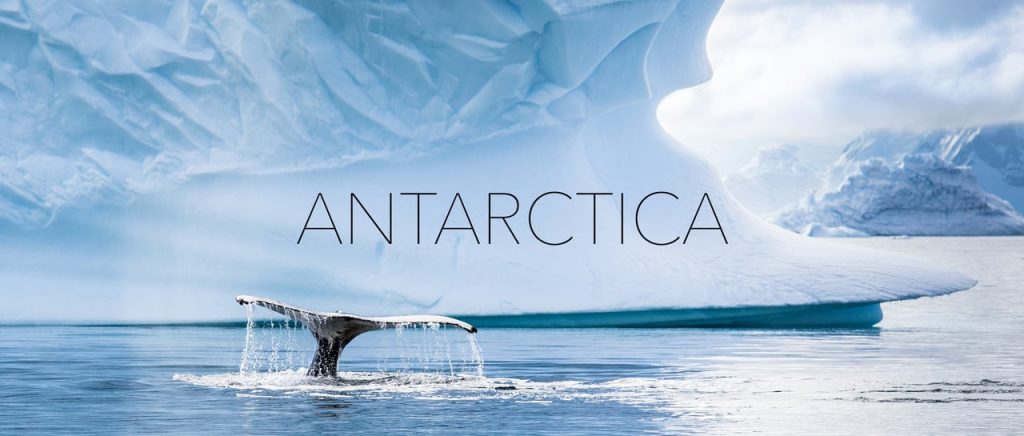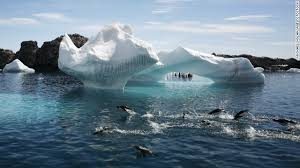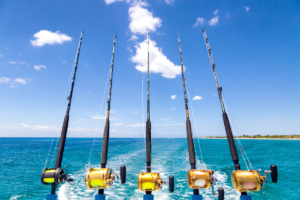A Trip to Antarctica

antartica
It’s difficult not to be a part of the never-ending race nowadays. There is competition to achieve the summit of Everest, non-stop flights to remote Pacific islands and lavish inns in the rainforest. We’ve tamed and colonized the greater part of the world, yet one inconceivable stretch of the planet stays outside our ability to understand: Antarctica.
This solidified mainland towards the end of the Earth has never been for all time occupied by man. Available just from November to March, it has no towns, no cities, no residence; simply excellent, cold, unknown wildness. Regardless of the fact that you’re going there on a voyage ship, as a great many people do, the isolation and the void will wrap you and convey you down to scale.
Also Read – 10 Forbidden Places that Government Doesn’t Want You to Know
Not that isolation is the main thing that rings a bell while you’re in the middle of the penguin colony the shoreline of Antarctic. Visiting here in the month of February, you would find huge numbers of these winged animals sitting firmly on numerous rocks, both modest gentoo penguins, and the bolder adélies, which appeared to be cheerful if being played with.
Grown-up Penguins bumped each other into the ocean and “porpoised” through the water like jumping salmon, their oiled white quills glimmering silver in the sun. Later in the trek you would also get to see chinstrap penguins on Livingstone Island, generally looking as though they are wearing the vintage collection of motorbike helmets.

Be that as it may, penguins are in no way, shape or form the main superstars here. We discovered it is similarly exciting to see a meandering gooney bird hovering over the boat, dunking its incredible wings into the moving waters of the Drake Passage. On the other hand fat elephant seals lolling on the shoreline in a soup of algae, grunting and crying at each other like elderly individuals from a men’s club.
Most energizing of all, however, are the whales. You can easily spot numerous of them in the waters with their beautiful tails emerging from the sea.
All of which is unequivocally what makes a voyage here so uncommon. A voyage to Antarctica is about as uncommon travel experiences as you can have, obviously keeping the trip the moon aside.
Contents
When to Actually Travel Antarctica?
You can just visit the zone amid the Antarctica summer, from November to March. Costs are less expensive toward the starting and end of the season; however, there are lesser chances that you would get to see the wildlife. Picture takers needing to catch great pictures of immaculate Antarctica ice will get their most ideal chances in November, and it is then when penguins begin to come aground for the process of home building. However, the days are shorter and the ice thicker, limiting access to a few territories.
In the month of December you can the little penguins hatching on the Antarctic Peninsula, and in January you can watch the process of them being fed. By February, Penguin settlements are occupied, loud and rotten as the youthful Penguins start their shed; February to March is possibly the best time to see whales and a decent number of hiding seals. By mid-March, most penguin areas are being emptied as the birds return to the ocean.

Is it safe?
Yes, on the off chance that you plan your trip with a legitimate organization. Watch that your picked company is a part of IAATO (the International Association of Antarctica Tour Operators), which has strict rules for safe and ecologically mindful operations. Chiefs and team on undertaking voyages are liable to have experience of polar conditions, and will be extremely mindful of security issues.
The two-day trip of the Drake Passage, the stretch of water between Tierra del Fuego and the Antarctic Peninsula, can be harsh surely, yet conditions are normally genuinely quiet once there.
Read More –10 Things you will learn from traveling
The most effective method to travel
The vast majority visit Antarctica on a ship. The IAATO site (iaato.org) has the list of every ship which is cruising in the zone however these are usually the ships carrying a huge number of people. We would firmly suggest settling on one of the littler ships conveying somewhere around 50 and 200 travelers.
They may not be as quick or lavish as the bigger ones, and you won’t discover club or themed eating on board. In any case, they all give sensible levels of peace as well as comfort and are substantially more prone to have ice-solidified bodies and a commander and group with expert information of polar areas. Most have naturalists and Polar students of history on board, who give talks and lead continuous shore outings and Zodiac dinghy visits (climate allowing). This is the point at which you get a genuine vibe for the scene and can see (and photo) the wildlife from the close point.
Bigger boats with more than 500 travelers are not permitted to land travelers, so you can just take a look around at the scene from the boat. While this may be a sensible alternative for anybody with limited mobility, who might experience issues getting into and out of the harsh weather situation, it means you miss the essence of this awesome ice location.

While a great many people find these daily shore outings and Zodiac rides sufficiently satisfying, there are ships which offer the alternative of kayaking, snowshoeing, mountaineering or cross-country skiing. On the off chance that you need to play the gutsy explore and trek towards the South Pole, you can join the land expeditions.
Most of the ships leave from Ushuaia in Argentina or Punta Arenas in Chile, and take around two days to reach the Antarctic Peninsula. Be that as it may, on the off chance that you lack time, or wouldn’t be able to go through the harsh conditions of the Drake Passage, it is possible to travel towards the South Shetland Islands and join a boat there.
What to take along?
You might go in the Antarctica summer; however, temperatures are still prone to be somewhat freezing. Skiing dress in January: warm clothing, a slim protecting layer, then wool or a meager down coat, all topped with waterproof trousers and coat (with hood). Additionally a cap, ski gloves, great shades and waterproof boots up to knee length for wet events.
Likewise, take the best binoculars you can have, and a camera with a decent zoom on the off chance that you need to maintain a strategic distance from photographs of dark mounds of whales coming fast; carry these in a waterproof case or knapsack, as Zodiac excursions can be splashy. Also, do pack bucketfuls of nausea pills. You’ll cross the unpleasant Drake Passage, so don’t try and cut expenses by picking a lodge without en suite offices.
Who will like it?
Any individual who appreciates seeing wildlife and the normal world would definitely enjoy the Antarctica. On the off chance that this isn’t your thing, you may wind up questioning why have I come to this place just to gaze at chunks of ice.
Where to go?
This may appear a bit evident; however numerous Antarctic ternaries incorporate the Falkland Islands and South Georgia, and also the Antarctic Peninsula. On the off chance that you are exceptionally enthusiastic about flying creature and animal life, then you can plant longer travels to each of the three destinations. However, these tend to take somewhere around 18 and 22 days.
For a great many people an exemplary 10 or 12-day journey to the Antarctica gives more than what they had planned, and they get to feel good amongst the ice shelves, penguins, whales, seals, campaign history and isolation.

So go ahead and plant a trip to Antarctica and enjoy the peace as well as the wildlife present out there.






